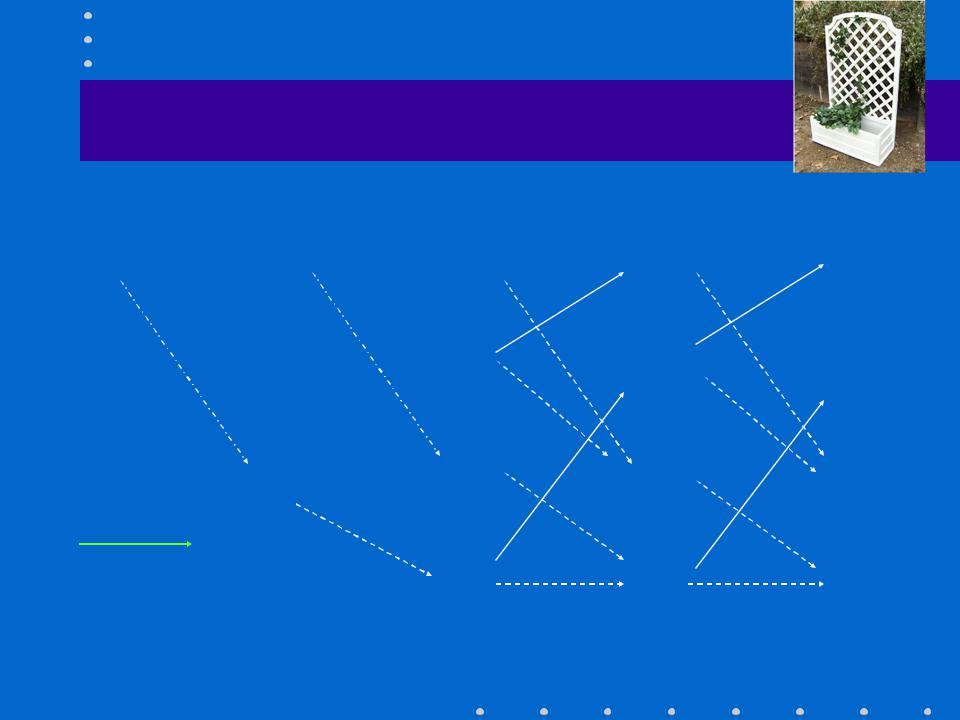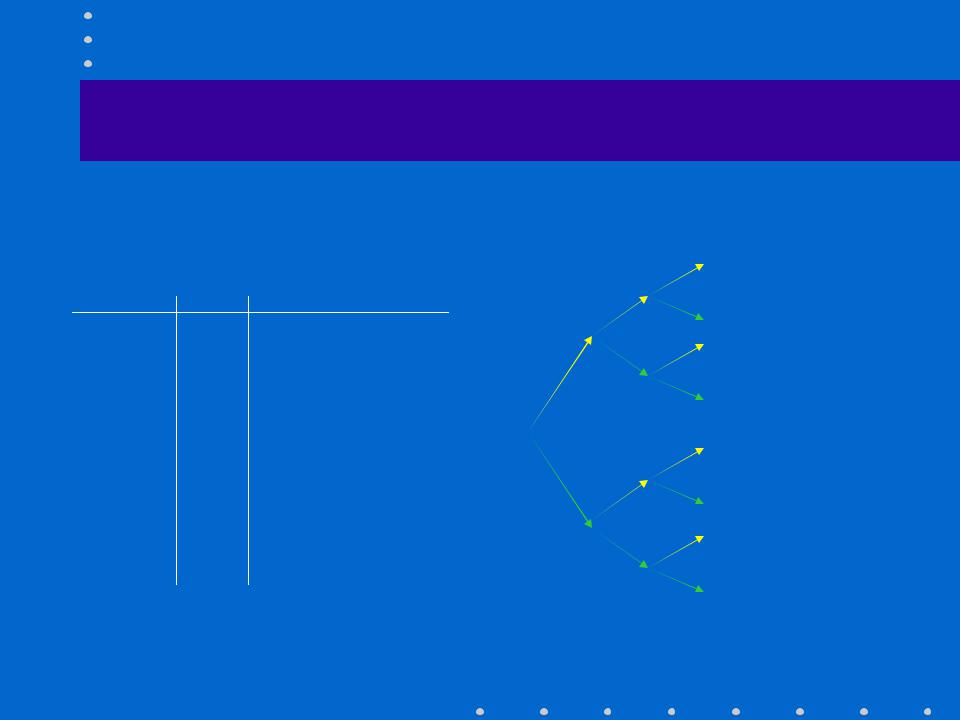
Теория управления / Л4-Миль-Мур-СА / pics / 6-sequential logic-31
.pdf
R = ½ encoder (application GSM, UMTS, etc.)




 u1(t)
u1(t)
u2(t)
x(t)
x(t) 
x(t-1) |
x(t-2) |
x(t-1) |
x(t-2)
clock
u1(t)
•For every input bit we generate 2 output bits
time
A.J. Han Vinck |
31 |
|
|
|
|
|
|
|

Transition to state diagram/table
|
|
|
|
|
|
|
|
|
|
|
content |
input |
output |
|
|
|
|
|
|
|
|
|
|
|
|
|
s1s0 = 00; in = 1; u1 = 1; u2 = 1 |
|
time |
||
|
|
|
|
|
|
|
|
|
|
|
|
||||
x(t) |
|
1 |
|
0 |
1 |
1 |
0 |
|
|
||||||
|
|
|
|
|
↓ |
|
|
|
|||||||
|
|
|
|
|
|
|
|
|
|
|
|
|
|
||
|
|
|
|
|
|
|
|
|
|
s1s0 = 10; in = 0; u1 = 1; u2 = 0 |
|
|
|||
x(t-1) |
0 |
|
1 |
0 |
|
1 |
1 |
|
|
|
|
||||
|
|
|
|
|
|
|
|
|
|
|
↓ |
|
|
|
|
|
|
|
|
|
|
|
|
|
|
|
|
|
|
|
|
x(t-2) |
0 |
|
0 |
1 |
|
0 |
1 |
|
|
|
|
|
|
||
|
|
|
|
s1s0 = 01; in = 1; u1 = 0; u2 = 0 |
|
|
|||||||||
|
|
|
|
|
|
|
|
|
|
|
|
|
|||
|
|
|
|
|
|
|
|
|
|
|
↓ |
|
|
|
|
u1(t) |
|
1 |
|
1 |
0 |
0 |
0 |
|
|
|
|
|
|
||
|
|
|
|
|
|
|
|
|
|
|
|
|
|
|
|
|
|
|
|
|
|
|
|
|
|
|
s1s0 = 10; in = 1; u1 = 0; u2 = 1 |
|
|
||
|
|
|
|
|
|
|
|
|
|
↓ |
|
|
|
||
u2(t) |
|
1 |
|
0 |
0 |
|
1 |
1 |
|
|
|
|
|
|
|
|
|
|
|
|
|
|
|
|
|
|
|
|
|
|
|
|
|
|
|
|
|
|
|
|
|
|
s1s0 = 11; in = 0; u1 = 0; u2 = 1 |
|
|
||
|
time |
|
|
|
|
|
|
|
|
|
|||||
|
|
|
|
|
|
|
|
|
|
|
|
|
|||
|
1/11 |
|
|
|
|
0/10 |
1/00 |
|
1/01 |
|
|
||||
00 |
in/out |
|
10 |
01 |
|
10 |
|
11 |
|||||||
|
|
|
|
|
|
|
|
|
|
|
|
||||
state |
|
s1s0 |
|
|
|
|
|
|
|
|
|||||
A.J. Han Vinck |
32 |
|
|
|
|
|
|
|

State transition graph (1)
|
1/10 |
|
11 |
1/01 |
0/01 |
|
0/10 |
10 |
01 |
|
1/00 |
1/11 |
0/11 |
|
00 |
|
0/00 |
?: how does the tree representation look like
A.J. Han Vinck |
33 |
|
|
|
|
|
|
|

Diagram => table
|
1/10 |
|
11 |
1/01 |
0/01 |
|
0/10 |
10 |
01 |
|
1/00 |
1/11 |
0/11 |
|
00 |
|
0/00 |
Old state |
input |
|
output |
new state |
|
|
|
|
|
|
|
00 |
0 |
|
00 |
00 |
|
00 |
1 |
|
11 |
10 |
|
01 |
0 |
|
11 |
00 |
|
01 |
1 |
|
00 |
10 |
|
10 |
0 |
|
10 |
01 |
|
10 |
1 |
|
01 |
11 |
|
11 |
0 |
|
01 |
01 |
|
11 |
1 |
|
10 |
11 |
|
|
|
|
|
|
|
A.J. Han Vinck |
34 |
|
|
|
|
|
|
|

Trellis representation (2)
00 |
00 |
00 |
00 |
00  00
00  00
00  00
00  00
00
11 |
11 |
11 |
11 |
|
01 |
01 |
01 |
10  10
10  10
10  10
10
01 |
01 |
|
01 |
time |
11 |
11 |
11 |
|
|||
|
10 |
|
10 |
compare this with the tree representation
A.J. Han Vinck |
35 |
|
|
|
|
|
|
|

Transition tables (3)
Old state input |
output |
new state |
|
00 |
0 |
00 |
00 |
00 |
1 |
11 |
10 |
01 |
0 |
11 |
00 |
01 |
1 |
00 |
10 |
10 |
0 |
10 |
01 |
10 |
1 |
01 |
11 |
11 |
0 |
01 |
01 |
11 |
1 |
10 |
11 |
···
The tree representation
A.J. Han Vinck |
36 |
|
|
|
|
|
|
|

State minimization
Q:can we model with fewer states?
are there states that do the same job?
Definition:
two states are equivalent if and only if (iff), for any input of length k, k > 0,
they give rise to the same output.
A.J. Han Vinck |
37 |
|
|
|
|
|
|
|

summary state reduction
|
S1 |
S |
S2 |
|
|
|
S3 |
|
S4 |
All states |
states with |
|
same output |
given the input
A
B
C
D
E
groups of states with
transitions to states in the same group given the input
A.J. Han Vinck |
38 |
|
|
|
|
|
|
|

Andrei Andreyevich Markov
Born: 14 June 1856 in Ryazan, Russia
Died: 20 July 1922 in Petrograd (now St Petersburg), Russia
Markov is particularly remembered for his study of Markov chains, sequences of random variables in which the future variable is determined by the present variable but is independent of the way in which the present state arose from its predecessors. This work launched the theory of stochastic processes.
Markov was also interested in poetry and he made studies of poetic style
Source: http://www-groups.dcs.st-and.ac.uk/~history/Mathematicians/Markov.html
•A. A. Markov. "Rasprostranenie zakona bol'shih chisel na velichiny, zavisyaschie drug ot druga". Izvestiya Fiziko-matematicheskogo obschestva pri Kazanskom universitete, 2-ya seriya, tom 15, pp 135-156, 1906.
A.J. Han Vinck |
39 |
|
|
|
|
|
|
|

Algorithm for minimizing the state table
Let S be the set of |S| states
Step 1: concerns outputs only
divide S into groups of states with the same outputs given the inputs.
If |S| groups remain, STOP
Step 2: concerns transitions only
subdivide every group into subgroups that contain all states that have their transitions to the same groups created in the previous step
If no group is further subdivided, STOP; otherwise go to step 2.
STOP: uniquely label every remaining group (equivalence class)
DEF: two states are equivalent if and only if, forAany.J. inputHan Vinckof length k, k > 0, they give rise to the same output40 .
